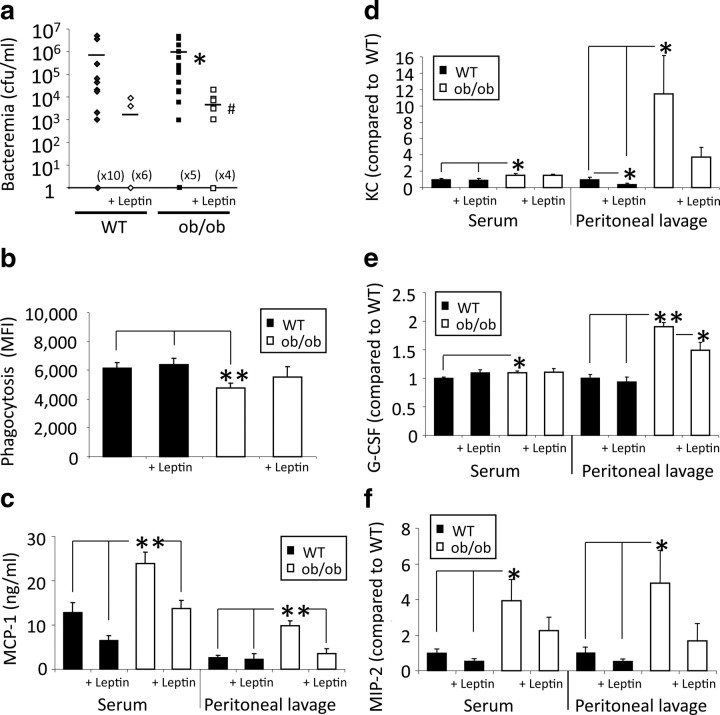Figure 4.
Leptin replacement showed beneficial effects on bacteremia, phagocytosis, and cytokine levels after CLP. a, After leptin replacement (1 μg/g body weight, i.p., twice per day) bacterial counts in the blood were reduced in both WT and ob/ob mice 24 h after CLP (n = 8–21 per group; data were pooled from 2 to 4 independent experiments that gave similar results). CFU, Colony-forming unit. *p < 0.05 compared with the WT group; # p < 0.05 compared with the untreated ob/ob group. b, Peritoneal neutrophil phagocytosis of opsonized E. coli in vitro after leptin reconstitution (1 μg/g body weight, i.p.). Phagocytosis in ob/ob was increased after leptin reconstitution compared with the untreated ob/ob mice 24 h after CLP (n = 8–16; data were pooled from 2 independent experiments that gave similar results). *p < 0.05 and **p < 0.01 compared with both WT groups. MFI, Mean fluorescence intensity. c–f, WT and ob/ob mice with leptin (or saline as control) replacement (1 μg/g body weight, i.p.) underwent CLP. MIP-2, KC, MCP-1, and G-CSF levels (nanograms per milliliter or x-fold of WT CLP values) were measured in both serum and peritoneal lavage 24 h after CLP. Leptin deficiency resulted in a significant increase of all chemokine levels and decreased to WT levels by leptin replacement (1 μg/g body weight, i.p.; data are 1 representative experiment of 2–3 independent experiments). *p < 0.05 and **p < 0.01 compared with the WT control group and the leptin-treated group. All values are means ± SEM.

